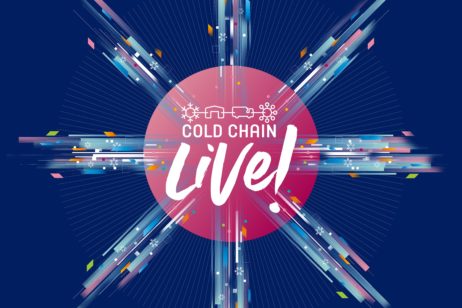
TOWARDS A NET ZERO COLD CHAIN

Professor Alan McKinnon | Kuehne Logistics University | Hamburg
alan.mckinnon@the-klu.org
@alancmckinnon
The Net Zero Supply Chain
Although we are currently preoccupied with the Covid19 pandemic, climate change poses a much greater long term threat. This is recognised by governments around the world, over thirty of which, including the UK, have now committed to being net zero carbon by 2050 or earlier. This will require deep reductions in greenhouse gases from all sectors, including logistics which represents 10-11% of these emissions. It is widely acknowledged that logistics will be one of the hardest sectors to decarbonise, partly because of its heavy dependence on fossil fuel but also because of its high forecast growth rate. The challenge is even greater for businesses across the cold chain as the growth in demand for refrigerated logistics services and their carbon intensity are well above the average.
In my presentation to the Cold Chain Live event, I will be reviewing the various ways in which companies can decarbonise their logistics operations, eventually getting them to ‘net zero’. I will discuss them within what I call my 10C framework, a ten-stage procedure starting with corporate motivation to cut GHG emissions. Other stages involve calculating the emissions, committing to carbon reduction targets and choosing an appropriate set of decarbonisation options for the business.
These options fall into five general categories. The first set help to reduce the underlying demand for logistics. It is sometimes said that the most sustainable truck mile is the one which is not run. Then come efforts to shift freight onto lower carbon transport modes. This poses more of problem for companies moving refrigerated freight as the temperature-control capabilities of rail operators are often quite limited. Across the cold chain the third group of initiatives, designed to improve asset utilisation, offer greater potential. The Transport KPI surveys undertaken in the UK between 1997 and 2009 revealed significant under-loading of lorries moving chilled and frozen food. It is not known to what extent this situation has improved over the past decade.
The fourth class of measures, relating to energy efficiency, is of particular relevance to refrigerated logistics, given its relatively high energy-intensity. Research suggests that refrigeration can account for 15% or more of the energy used in temperature-controlled deliveries and over 70% of energy consumed by cold stores. In the case of trucking operations, the vast majority of the energy is, of course, used for propelling the vehicle and this can be substantially reduced by driver training, telematics, aerodynamic profiling, more efficient power-trains etc.
The final set of options switch logistics to energy sources with much lower global warming potential (GWP). This again is a differentiator for refrigerated operations as the cooling process uses gases with among the highest GWPs. This makes the choice of refrigerant, the efficiency of the refrigeration process and gas-leakage critical determinants of these operation’s carbon intensity. Across the cold chain, the level of emissions can also be dramatically reduced by switching motive power and warehousing to low carbon electricity either delivered directly or via batteries or electrolysed hydrogen.
My talk will briefly summarise this broad range of decarbonisation options, illustrating how there is no ‘silver bullet’, but as Al Gore once said a lot of ‘silver buckshot’.
Headline Partners
Supported by

